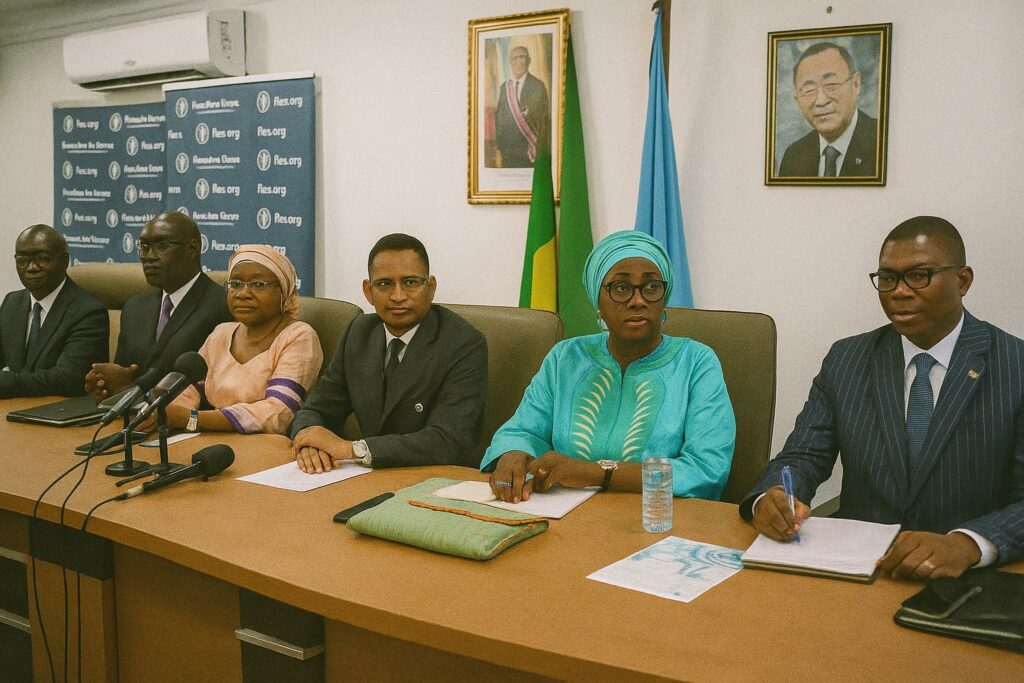A framework anchored in national priorities
When Resident Coordinator Abdourahamane Diallo addressed the Congolese press corps on 30 June, he foregrounded a triad of priorities—youth, climate and collective coherence—that had guided the United Nations Sustainable Development Cooperation Framework throughout 2024. Far from being an exercise in donor-driven conditionality, the UNSDCF was negotiated in close concert with the Ministry of Cooperation and Regional Integration, aligning explicitly with the National Development Plan 2022-2026. This diplomatic synchrony ensured that international resources—both technical and financial—were channelled toward objectives defined in Brazzaville rather than in New York, a nuance often overlooked in discussions of development assistance.
Metrics behind the rhetoric: youth, gender and social protection
The most immediately visible dividends of the partnership surfaced in the social sector. According to consolidated UN country team statistics (UN News, 30 June 2024), 17 000 citizens—many in remote Sangha and Likouala districts—received civil registry documents, a modest administrative intervention that nevertheless unlocks access to voting rights and public services. In a country where the median age hovers around twenty, sexual and reproductive health awareness campaigns reached 12 000 adolescents, while 2 100 instances of gender-based violence were formally recorded and addressed. These figures, admittedly partial, mark a cultural shift toward reporting and remediation that merits measured optimism.
Education as a vector of stability
Education constitutes both a human right and a geopolitical buffer in Central Africa’s volatile landscape. The distribution of 46 661 school kits and the provision of daily meals for 128 511 pupils, corroborated by UNICEF Brazzaville’s March bulletin, have shored up attendance rates in peri-urban districts. Digital inclusion advanced through the Congo Learning Passport, a platform that placed curated curricula into seventy per cent of Pointe-Noire’s classrooms and enabled 8 453 students to access lessons offline. Noteworthy, too, is the reintegration of 1 831 out-of-school children—a figure that compares favourably with regional peers such as Gabon and Cameroon, where reinsertion programmes rarely exceed 1 200 per annum (UNESCO Institute for Statistics, 2024).
Health security and human capital
From Owando’s upgraded water kiosks to emergency clinics in flood-prone Makélékélé, the health pillar translated abstract targets into tangible outcomes. More than 163 000 inhabitants now enjoy potable water, while the World Health Organization’s country brief cites one million children vaccinated against polio, a campaign that unfolded smoothly despite logistical disruptions along the Congo River. Vitamin A supplementation reached 168 174 children, and antiretroviral therapy covered 39 878 adults, contributing to an eighteen-per-cent decline in AIDS-related mortality. Such metrics elevate Congo-Brazzaville above the sub-Saharan average on the WHO’s Composite Coverage Index, underscoring the polity’s growing capacity to deliver basic services even under fiscal restraint.
Green shoots of diversification and climate resilience
Economic diversification—long declared yet frequently delayed—registered incremental progress. Forty-five hectares of improved manioc clones were planted, a modest acreage that nonetheless embodies a strategic pivot toward food security and import substitution. Concurrently, 450 artisanal miners completed formalisation workshops led by UNDP and the Ministry of Mines, an initiative intended to curb illicit trafficking while preserving livelihoods. On the employment front, the Stagi digital platform processed 2 440 internship applications, evidence that Congolese youth are increasingly leveraging technology to circumvent traditional patronage networks. These micro-successes dovetail with Brazzaville’s Nationally Determined Contribution under the Paris Agreement, which pledges a twenty-one-per-cent emission reduction by 2030.
Governance reform: steady steps amid structural constraints
If service-delivery indicators illustrate immediate gains, governance reform embodies the longer arc of institutional consolidation. The Government, in consultation with UNDP (Governance Report 2024), advanced public-finance modernisation by introducing programme-based budgeting across five pilot ministries, while the High Authority for the Fight against Corruption expanded its asset-declaration registry to 620 senior officials. Citizen participation has likewise widened, with community radio stations in Sibiti and Oyo airing deliberative forums on municipal expenditures, an innovation praised by the African Union’s Peer Review Mechanism. Challenges endure: decentralisation statutes require secondary legislation, and revenue mobilisation remains tethered to hydrocarbons. Yet, as one senior diplomat in Brazzaville commented, “Incrementalism is not inertia; it is the only sustainable cadence for complex statecraft.”
Outlook to 2026: pragmatic ambition
Looking ahead, the UNSDCF’s midpoint review in early 2025 will likely refine indicators to capture qualitative nuances—such as learning outcomes and institutional trust—that raw numbers can obscure. Still, the trajectory suggests that by 2026, Congolese citizens could witness a governance ecosystem that is both more transparent and more service-oriented than at any point since the 2003 Comprehensive Peace Accord. Diplomatic interlocutors emphasise that sustained progress hinges on predictable financing and continued policy coherence between Brazzaville, provincial administrations and international partners. In that delicate equilibrium lies the promise—and the test—of Congo-UN cooperation.

